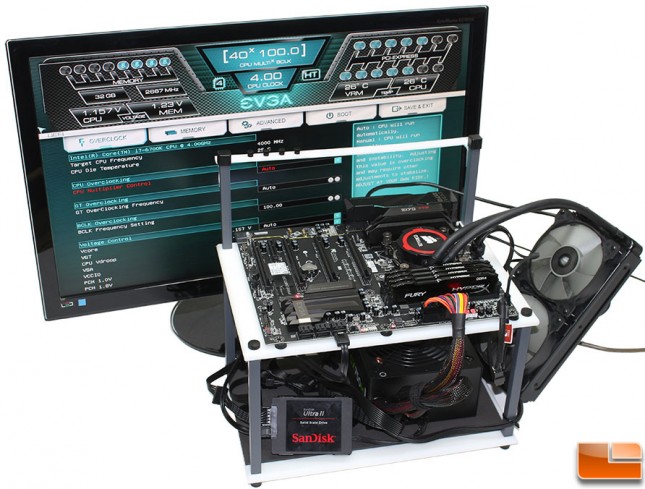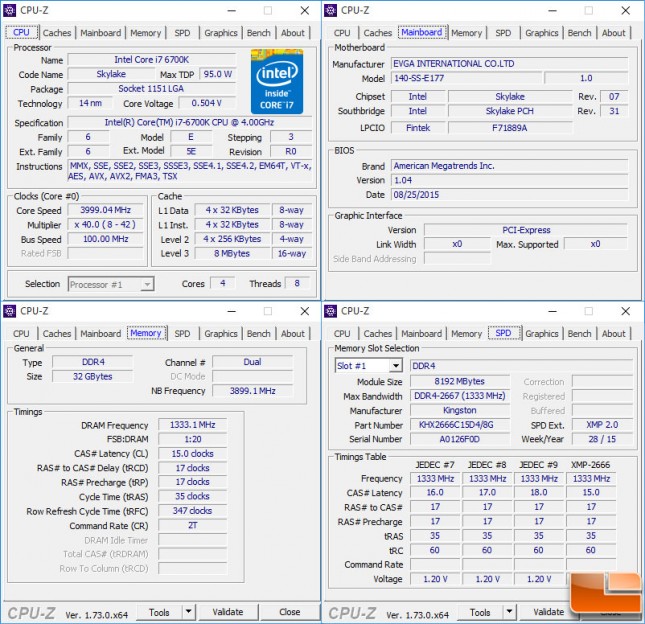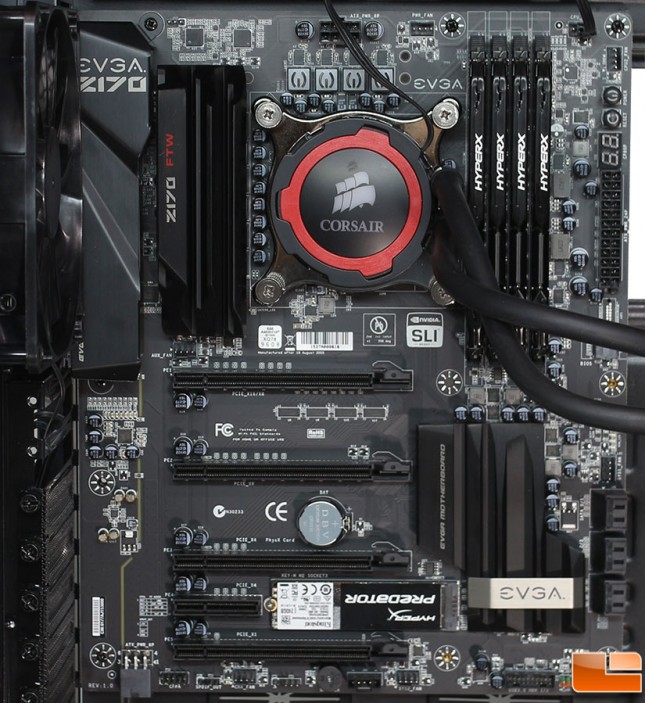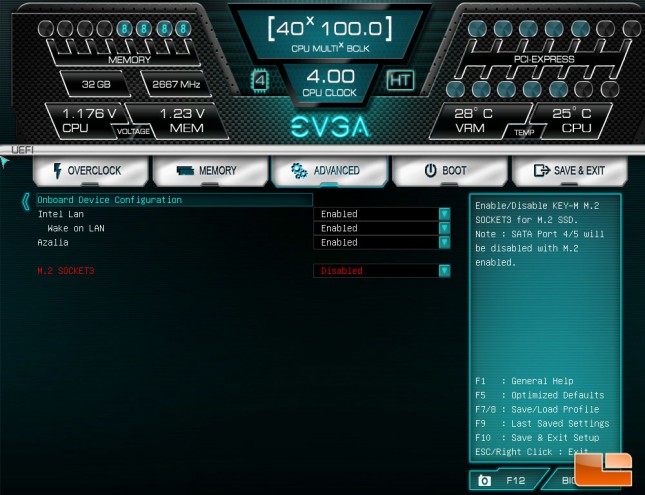EVGA Z170 FTW ATX Motherboard Review
Legit Reviews Test System
Intel Z170 Test Platform
Here is a quick look at the specific components used in the test system:
| Intel LGA 1151 Z170 Test Platform | ||
| Component | Brand/Model | Live Pricing |
| Processor | Intel i7-6700K | Click Here |
| Memory | Kingston 32GB DDR4 2666MHz | Click Here |
| CPU Cooler | Corsair H105 | Click Here |
| Video Card | eVGA GTX 970 SC | Click Here |
| Hard Drive | Intel SSD Pro 2500 180GB | Click Here |
| Hard Drive 2 | Sandisk Ultra II 480GB SSD | Click Here |
| M.2 | Kingston Predator G2 x4 240GB | Click Here |
| Power Supply | Corsair CX750M | Click Here |
| USB 3.1 Type C | Kingston DataTraveler microDuo 3C | Click Here |
| Operating System | Windows 10 Pro 64-bit | Click Here |
Now for a quick look at the eVGA GTX 970 that we will be using with NVIDIA driver version 355.60.
Testing Process
The above listed components will be installed on an open air test bed. Windows 10 will be a fresh install with all the latest patches, drivers and firmware available at the time we begin the testing.
All testing will be done in a temperature controlled room that maintains a 72F (22.2C). A 24-hour burn in is done to allow the thermal paste time to cure before doing any thermal testing.
Where possible, we will use integrated benchmarks, and run them three times averaging the results. In situations where there are no integrated benchmarks, we will use FRAPS to an analyze the performance, doing the same game run three times before averaging the FRAPS results.
Installation Issue
I noticed pretty quickly during installation that the rear I/O cover interferes with the back of the GPU, even without a backplate. While it’s not a good idea for anything to be rubbing up against another component, EVGA has placed a piece of heavy duty plastic where the two meet, helping to ensure no shorts can happen.
The EVGA GTX 970 we are using in testing, happens to have the EVGA backplate on it; which increases the width of the card by a little. Once again, it rubs up against the I/O cover, however I was able to install the card as the backplate has a little give, if the screw that is securing it under the GPU isn’t overly tight. This is something that EVGA should look into and resolve; other manufacturers have included rear I/O covers without having any issues with touching the back of the GPU.
M.2 Boot Initialization
One little annoyance with the EVGA Z170 FTW, if you are using a M.2 drive, you have to manually enable the M.2 socket. This is done in the UEFI BIOS, under the Advanced menu option “Onboard Device Configuration”. M.2 hasn’t quite taken over th drive market, so this won’t affect many people.
In addition, the Kingston Predator M.2 drives used in this testing do not like to run under the UEFI configuration, so within the BIOS we had to change the Boot Mode from UEFI to Legacy. This is a limitation on the Kingston M.2 drive, however the EVGA UEFI BIOS defaults to booting only in UEFI, there is no “Both” option like there is on many other system; UEFI or Legacy.




